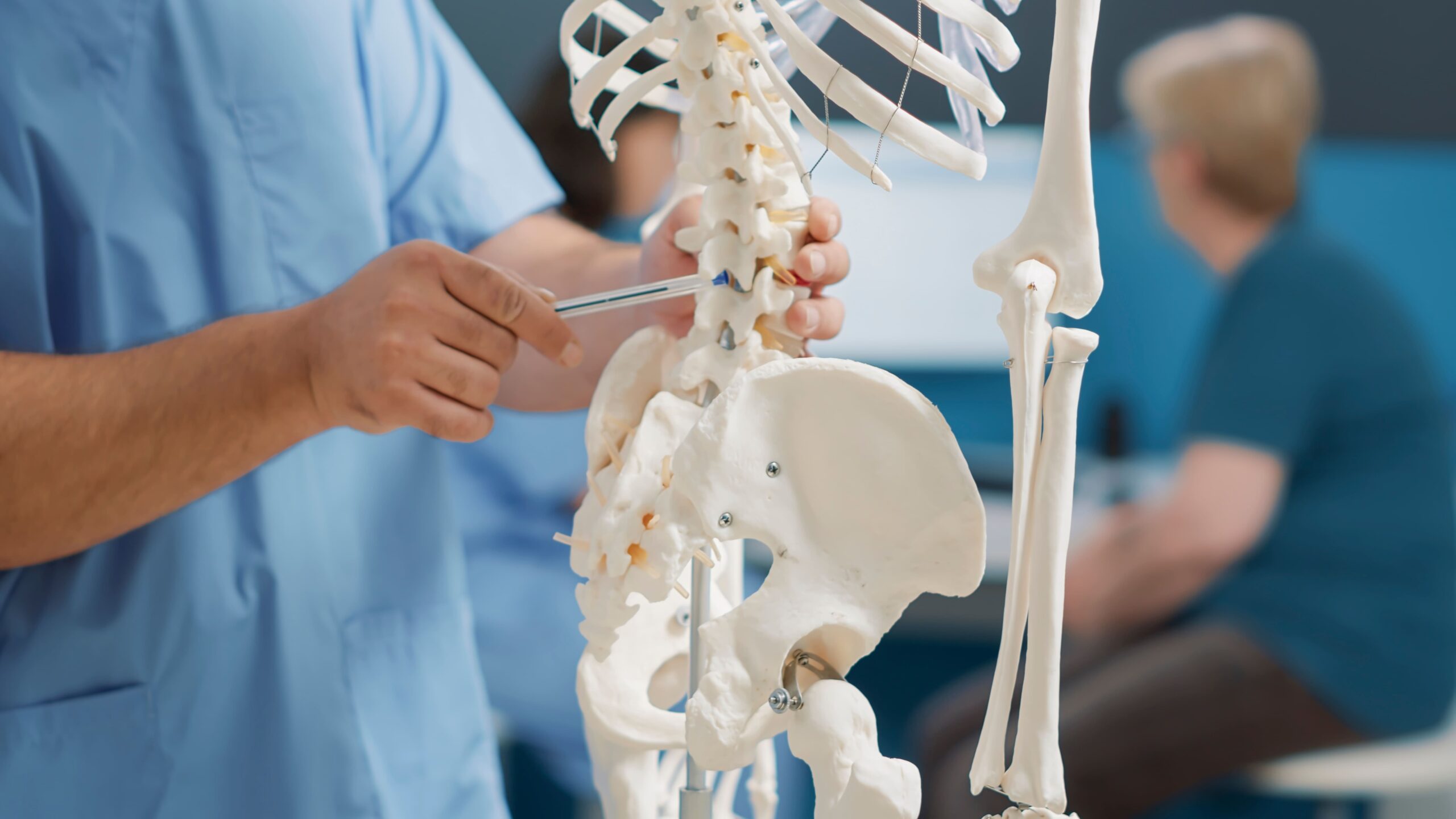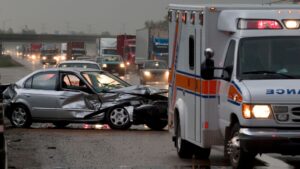
A side-impact collision, often called a “T-bone” crash, can change your life in seconds. These accidents are violent and can cause serious injuries. If another driver’s distracted or reckless behavior caused the crash, you may be entitled to compensation for your medical bills, lost income, and other damages.
At Brett McCandlis Brown & Conner, our T-bone accident lawyers have helped thousands of Washington residents navigate the complex legal aftermath of serious car accidents. We understand the pain, disruption, and anxiety that follow a crash, and we’re here to shoulder the legal burden so you can focus on recovery. With over $100 million recovered for injured clients across the state, we have the experience and compassion to guide you forward.
Let us help you determine your legal rights and fight for the compensation you deserve.
What Is a T-Bone Accident and Why Are They So Dangerous?
A T-bone accident happens when one vehicle crashes directly into the side of another, forming a “T” shape at the point of impact. These side-impact collisions often occur at intersections or when one driver fails to yield the right of way.
T-bone accidents are hazardous because the sides of most vehicles offer far less protection than the front or rear. Even with side airbags, the distance between the door and the driver or passenger is minimal, increasing the risk of serious injuries.
The severity of a T-bone accident depends on the vehicles’ size, speed, and the exact point of impact. Victims on the receiving side of the impact are often left with life-altering injuries, long-term pain, or permanent disability.
What Are Common Causes of T-Bone Accidents?
While some T-bone accidents result from poor weather or unexpected obstacles, most are caused by preventable driver error. Common causes include:
- Distracted driving. Texting, checking GPS, adjusting the radio, eating, or any activity that takes a driver’s attention off the road can lead to side-impact crashes.
- Failure to yield. Drivers who ignore yield signs or traffic signals often cause T-bone collisions at intersections.
- Running red lights. Impatient or inattentive drivers may enter intersections against the light, directly striking crossing traffic.
- Speeding. Excessive speed reduces reaction time and increases the force of impact during a collision.
- Driving under the influence. Alcohol and other impairing substances often contribute to serious side-impact accidents.
- Improper left turns. Misjudging an oncoming car’s speed when turning left can cause a dangerous T-bone crash.
While the moments leading up to a T-bone crash may feel like blurry memories, identifying the cause is often the first step toward holding the right party accountable.
What Should I Do After a T-Bone Accident?
The moments after a crash are confusing and stressful. Taking the proper steps can help protect your health and strengthen your legal claim. We recommend:
- Call 911. Report the crash by calling emergency services.
- Seek medical attention. Even if your injuries feel minor, get checked out. Some symptoms, especially head injuries or internal damage, may not appear right away.
- Collect evidence. If you can, take photos of the crash scene, the vehicles, and any visible injuries. Get names and contact information from witnesses.
- Request a police report. The responding officer will create an official report that documents essential facts and may include statements from those involved.
- Notify your insurance company. You should report the accident but do not admit fault or give a recorded statement without speaking to an attorney.
- Contact a T-bone accident attorney. An experienced lawyer can help you understand your rights and build your case.
Your health and safety should always come first. Once the immediate crisis has passed, legal guidance can help you move forward with confidence.
What Damages Can I Recover?
If you or a loved one were injured in a side-impact crash caused by someone else’s negligence, you may be entitled to recover compensation for:
- Medical expenses,
- Lost wages,
- Loss of earning capacity,
- Pain and suffering,
- Property damage,
- Loss of enjoyment of life, and
- Wrongful death.
The total value of your claim depends on many factors, including the seriousness of your injuries and the impact on your future.
How Do I File a T-Bone Accident Claim?
Filing a T-bone accident claim in Washington can feel overwhelming. Fortunately, you don’t have to go through it alone. Here’s a step-by-step breakdown of how to move forward with a personal injury claim after a side-impact crash.
Hire an Experienced T-Bone Accident Lawyer
The first step is to speak with a qualified Washington car accident attorney. T-bone accident lawyers can explain your rights, evaluate your situation, and handle communication with insurance companies from the beginning. Early legal support helps preserve critical evidence and ensures you don’t say or do anything that could weaken your claim.
Preserve and Evaluate Evidence
Your attorney will help collect and review the evidence needed to prove your case. This may include:
- Photos of the crash scene and vehicles,
- Surveillance or dash cam footage,
- The police report,
- Medical records, and
- Witness statements.
The strength of your claim often depends on the quality and detail of the evidence available.
Identify the Liable Party or Parties
Determining who is legally responsible for your T-bone accident is a critical step in building a strong claim. Your attorney will conduct a thorough investigation to identify all parties whose actions may have contributed to the crash.
Calculate Your Damages
Once liability is established, your attorney will begin the process of calculating your damages. This step requires more than simply adding up receipts. Your lawyer will often work with medical professionals, vocational experts, and financial consultants to assess the full impact of the accident on your life—both now and in the future.
Send a Demand Letter
Once your damages are calculated and liability is established, your attorney will send a formal demand letter to the at-fault party’s insurance company. This letter outlines:
- What happened,
- Who was at fault,
- Your injuries and losses, and
- The amount of compensation you are requesting.
This communication begins the negotiation process and signals that you are taking your claim seriously.
Negotiate with the Insurance Company
Insurance companies often respond to demand letters with counteroffers that are lower than you deserve. Your lawyer will handle these negotiations on your behalf. If the insurer refuses to make a fair offer, your attorney may recommend the next step: litigation.
File a Lawsuit
If the insurance company refuses to agree to a fair settlement, your attorney may recommend filing a personal injury lawsuit. This step lets you formally pursue compensation through the court system when negotiations alone aren’t enough.
FAQs
Here are more common questions and answers regarding T-bone accidents.
What Are Common Injuries from Side-Impact Crashes?
Side-impact crashes often result in:
- Head and brain injuries;
- Neck and back trauma;
- Spinal cord injuries;
- Internal bleeding;
- Fractures; and
- Emotional trauma, such as PTSD.
Because the impact zone is so close to the occupants, injuries are often more severe than in other types of car accidents.
How Long Do I Have to Bring a T-Bone Accident Claim?
Washington’s statute of limitations for personal injury claims is three years from the accident date. Failing to file within this time frame could prevent you from recovering compensation. However, some exceptions may apply in limited cases, so you should speak with an attorney immediately.
How Much Does It Cost to Hire a Washington Car Accident Attorney?
At Brett McCandlis Brown & Conner, we work on a contingency fee basis. That means:
- No up-front fees,
- No hourly billing, and
- We only get paid when you do.
You never have to worry about affording legal representation. Your recovery is our priority.
What If I Am Also at Fault for the Accident?
Washington follows the doctrine of pure comparative fault. Even if you were partly responsible for the accident, you can still recover compensation. Your percentage of fault will reduce your damages. For example, if you were 20% at fault, you can still recover 80% of your damages.
How Much Compensation Can I Recover?
Every case is unique. There is no fixed compensation. Instead, your recoverable damages will depend on the following factors:
- The extent and severity of your injuries,
- Your total medical costs and future care needs,
- The amount of time you miss from work,
- The impact on your daily life, and
- Available insurance coverage.
We will help calculate what your case may be worth and pursue the maximum amount available under the law.
Speak to a T-Bone Accident Attorney Today to Help You Move Forward
After a serious side-impact collision, you don’t need to face the legal system alone. At Brett McCandlis Brown & Conner, we’ve spent over 40 years helping Washington families recover physically, emotionally, and financially after devastating accidents.
Our attorneys are open, responsive, and easy to talk to. Most of all, we get results. When you work with us, you can stop worrying about paperwork, insurance adjusters, and deadlines. We take care of everything so that you can take care of yourself.
Contact us today to schedule your free case evaluation. There’s no risk or up-front cost. But you will get compassionate, knowledgeable legal support from one of Washington’s most trusted personal injury law firms.


